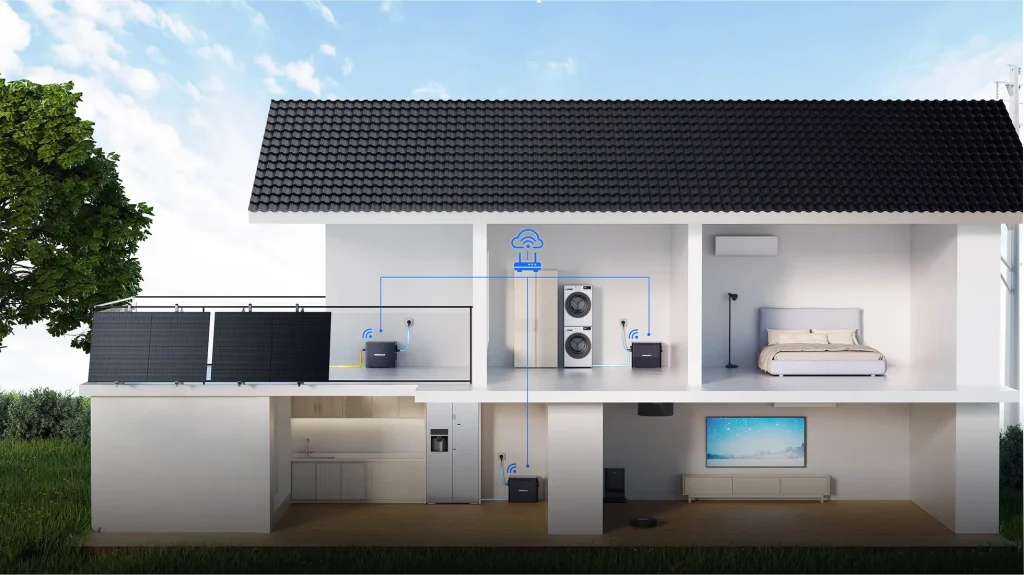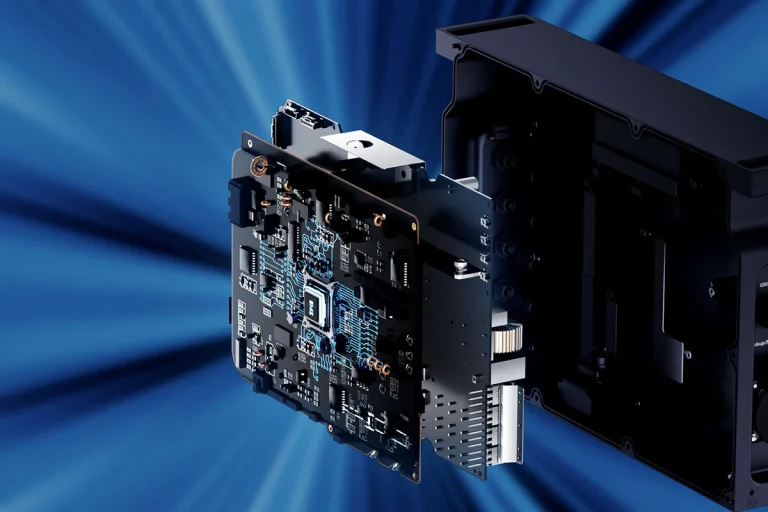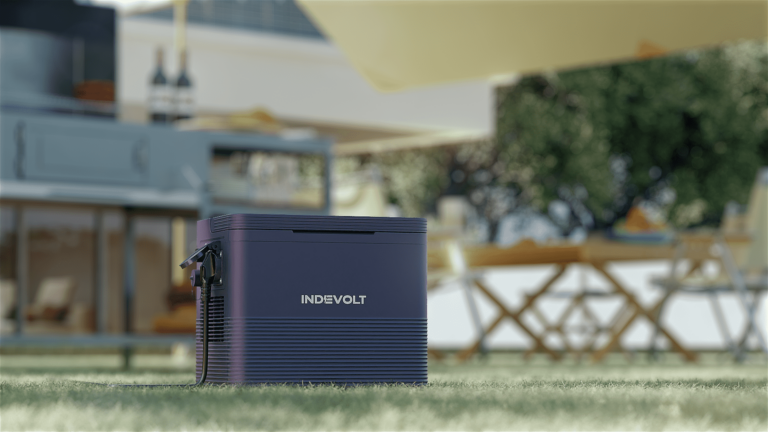Wirelessly connected: The flexible, efficient next-generation balcony solar power system with storage
INDEVOLT’s wireless parallel connection enables flexible, cable-free storage solutions for balcony PV systems — ideal for apartments, houses, and individual expansion needs.
As solar systems become increasingly widespread, the demand for flexible, efficient, and scalable energy storage solutions is also growing. While traditional storage solutions usually require centralized installation of PV modules and battery storage units, INDEVOLT’s wireless parallel connection technology unlocks new freedoms for designing modern balcony solar power systems with storage.
What is wireless parallel connection?
Before we explore its specific advantages, let’s take a closer look at the technology itself: What exactly does “wireless parallel connection” mean, and how does it differ from traditional storage solutions?
Wireless parallel connection refers to the linking of multiple INDEVOLT BK1600 storage units into a synchronized overall system via a WiFi network — entirely without physical cables. This creates a “decentrally installed, centrally controlled” energy system that is quick and easy to set up. Up to three units can be connected this way, providing a total storage capacity of 4.9 kWh.
Advantages of wireless parallel connection
After the technical introduction, it becomes clear: this new technology brings numerous practical benefits. Below, we explore the key advantages of wireless networking — applicable both to new builds and existing apartments.
1. Flexible placement of PV modules and storage – Optimal space utilization
Space is often a constraint, especially in apartments and multi-family buildings. Traditional systems require PV modules and storage to be installed together at a single location. Wireless networking, by contrast, allows flexible distribution across multiple rooms or different balconies — ideal for decentralized energy use.
2. Circumventing the 800-Watt feed-in limit
This technology solves not only space issues but also overcomes technical hurdles related to grid feed-in. Households aiming for high self-consumption rates will benefit significantly here.
Many households with outdoor installations hit the legal 800-watt grid feed-in limit. High-power appliances such as instantaneous water heaters or tumble dryers then have to draw additional electricity from the grid — even when sufficient green energy is available.
INDEVOLT’s wireless solution enables such appliances to be connected to the off-grid output. An intelligent load distribution system ensures that locally stored solar power is used first. This increases the self-consumption rate and maximizes the utilization of photovoltaic energy.
3. Intelligent control via the INDEVOLT App
Beyond spatial flexibility and technical efficiency, wireless networking offers a third core advantage: intelligent control.
The system can be set up and centrally managed with just a few clicks in the app. Charging and discharging processes are coordinated across the entire system. The main unit takes charge of optimizing energy distribution, preventing overloads, and ensuring stable operation — no additional control devices required.
Typical application scenarios
But what does practical implementation look like? The following scenarios demonstrate how INDEVOLT’s wireless parallel connection solves real-world daily challenges — in a simple way.
Scenario 1: Single-Family Home / Villa
Problem: Users want to use storage units flexibly across multiple rooms, without cable clutter.
Solution: The devices can be distributed across different floors and connected wirelessly. Management and energy flow are controlled centrally — with no wiring required.

Scenario 2: Apartment with multiple small balconies
Problem: Only two PV modules fit on each balcony, but the user wants to install the maximum allowed four modules (under 2000 W per Germany’s DIY regulations).
Solution: The PV modules and storage units can be distributed across multiple balconies. The wireless connection enables centralized control and easy expansion — ensuring maximum PV utilization even in limited space.

Conclusion: Wireless networking unlocks new possibilities for balcony storage
In summary, it can be said that INDEVOLT’s wireless parallel connection is more than just a technical advancement — it delivers real added value to the daily lives of households with PV systems.
INDEVOLT’s wireless parallel connection transforms a static power storage unit into a dynamic, scalable system. Without cables, with greater flexibility, and featuring simple installation, it takes storage systems to the next level — as easy to use as a smart speaker or a smart lamp.
If you want to modernize or expand your solar power storage, INDEVOLT’s wireless networking is a true game-changer.





